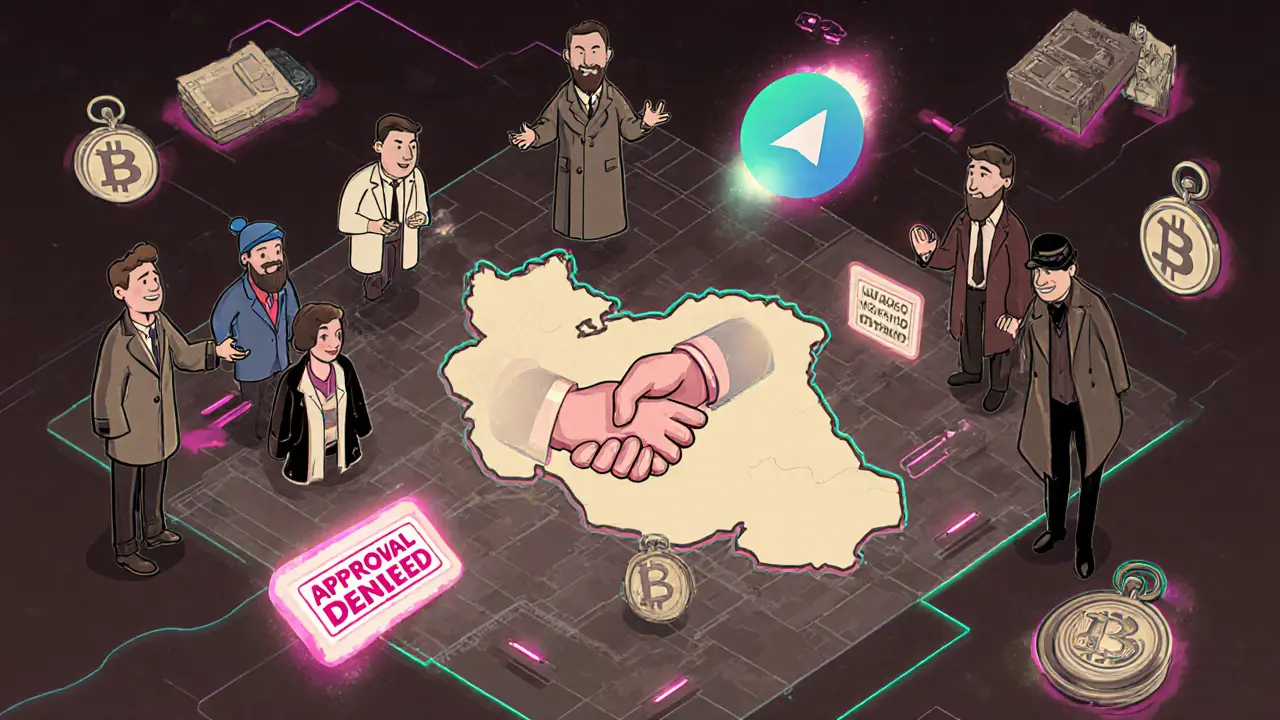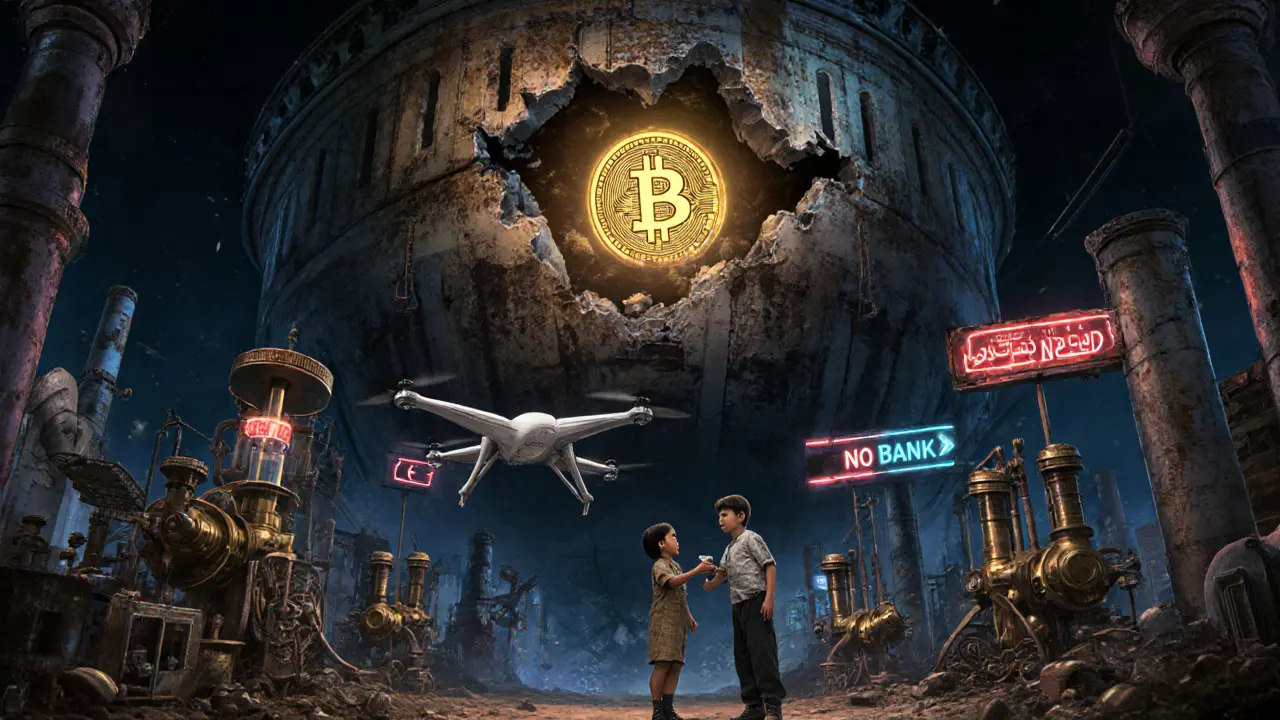Why $4.18 Billion Flew Out of Iran via Crypto in 2024
 Nov, 23 2025
Nov, 23 2025
Iranian Rial to Crypto Value Calculator
Calculate Your Survival Funds
In 2024, Iranians converted over $4.18 billion in crypto to escape economic collapse. See how much your rial savings could have been worth at black market rates.
Results
Official Rate (450,000 IRR/USD)
$
Black Market Rate (45,000 IRR/USD)
$
Difference
$
Estimated Fees (5%)
-$
Final Value
Official Rate:
Black Market Rate:
When the Iranian rial lost 90% of its value over six years, people didn’t just stop spending-they started running. Not with suitcases of cash, but with smartphones and internet connections, moving billions into Bitcoin and other digital assets. In 2024, $4.18 billion in cryptocurrency left Iran. That’s not a hack. Not a state operation. Not even a speculative bubble. It was millions of ordinary people trying to keep what little they had left.
It Wasn’t About Trading-It Was About Survival
Most people think crypto is for investors chasing moonshots. In Iran, it was for mothers buying bread, students paying tuition, and small business owners importing medicine. Chainalysis, the blockchain analytics firm, found that 70% more crypto flowed out of Iran in 2024 than in 2023. And the vast majority of those transactions were under $1,000. This wasn’t hedge funds moving money. This was people turning their life savings into digital gold because the bank wouldn’t let them keep it in rials. The rial’s collapse wasn’t sudden. It was a slow bleed. Since 2018, U.S. sanctions tightened, oil exports dropped, inflation hit 45%, and the official exchange rate became meaningless. By 2024, the black-market dollar rate was 10 times higher than the government’s. If you earned 10 million rials a month, you could buy less than a kilo of rice. But if you turned that into Bitcoin? You could hold value-even if the government froze your bank account.When War Broke Out, Crypto Spiked
The biggest spikes didn’t come from economic reports. They came from news alerts. On April 9, 2024, Israel bombed the Iranian embassy in Damascus. Two days later, Iran fired missiles at Israel. On the same day, Bitcoin outflows from Iran jumped 300% in 48 hours. Another surge hit in late September and early October, during the worst of the Iran-Israel conflict. Google Trends showed spikes in searches for “Iran Israel” exactly when crypto outflows peaked. People weren’t betting on war. They were betting on survival. When bombs fall, banks freeze. When sanctions tighten, ATMs run dry. But Bitcoin? It doesn’t care about borders. It doesn’t need a government’s permission. So when tensions rose, Iranians rushed to convert rials into Bitcoin-fast. And they didn’t use fancy tools. Most used simple apps on their phones, connected through VPNs, trading on local exchanges like Nobitex and Wallex.Iran’s Crypto Ecosystem Was Built by People, Not Banks
Unlike Russia, where crypto use is tied to state-backed workarounds, or North Korea, where hackers steal crypto to fund weapons, Iran’s story is different. It’s grassroots. It’s personal. There are over 100,000 people on Persian-language Telegram groups sharing how to buy Bitcoin without getting caught. Reddit threads in Farsi tell stories of people who saved their child’s medical fund in Bitcoin after their bank blocked international transfers. Students abroad send crypto to parents in Tehran because Western banks refuse to process Iranian remittances. Small traders use crypto to pay for goods from Turkey or Pakistan, bypassing SWIFT entirely. Even the government played a strange double game. While cracking down on private crypto exchanges in late 2024-demanding full user data, ID checks, and transaction logs-they were quietly encouraging mining. Iran became one of the top five Bitcoin mining countries in 2024, thanks to cheap electricity and government tolerance. Mining wasn’t just for profit. It was a way to turn surplus energy into a form of wealth the state couldn’t easily seize.
Why This Matters Beyond Iran
This isn’t just an Iranian problem. It’s a global warning. For decades, sanctions were meant to cripple economies. But in 2024, they started failing. Why? Because crypto doesn’t need banks. It doesn’t need visas. It doesn’t need approval from Washington or Brussels. When people are desperate enough, they find a way. Iran’s $4.18 billion outflow is 26% of all crypto transactions tied to sanctioned countries worldwide. That’s more than Russia, Venezuela, and North Korea combined-adjusted for population and GDP. Venezuela had hyperinflation. Russia had war. But Iran had both, and still managed to build a parallel financial system from the ground up. Financial institutions are paying for it. Exchanges spent 40-60% more in 2024 just to monitor Iranian transactions. Compliance teams are overwhelmed. Tools that once caught suspicious transfers now struggle with obfuscated wallets, decentralized exchanges, and peer-to-peer trades.The Tools Iranians Used-And Why They Worked
You won’t find Iranians using complex DeFi protocols. They use simple, accessible tools:- VPN services to bypass internet blocks and access international exchanges
- Local exchanges like Nobitex and Ramzinex, which allowed rial-to-Bitcoin trades before being forced to shut down
- Peer-to-peer platforms like Paxful and LocalBitcoins, where users trade directly with others
- Telegram bots that auto-convert rials to USDT at live rates
- Hardware wallets like Ledger and Trezor, to store crypto offline and avoid hacking
